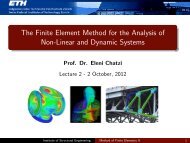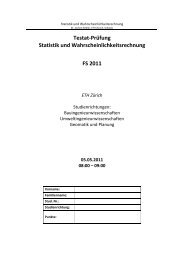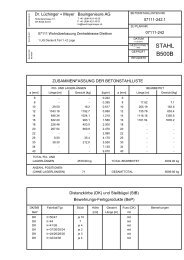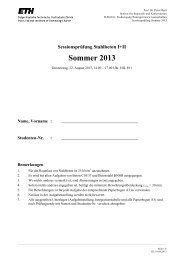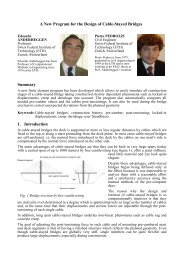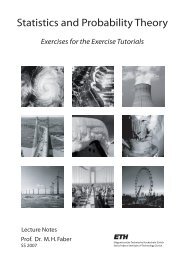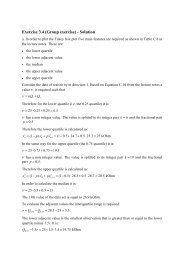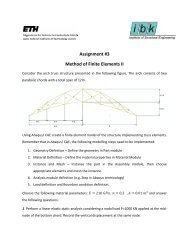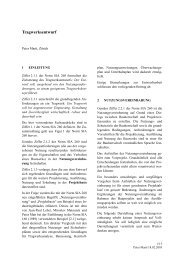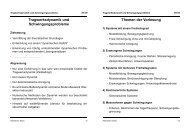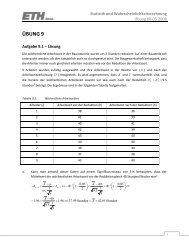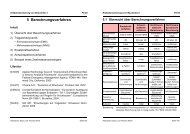The Finite Element Method for the Analysis of Non-Linear and ...
The Finite Element Method for the Analysis of Non-Linear and ...
The Finite Element Method for the Analysis of Non-Linear and ...
You also want an ePaper? Increase the reach of your titles
YUMPU automatically turns print PDFs into web optimized ePapers that Google loves.
Example<br />
B. Jaumann stress rate <strong>for</strong>mulation<br />
This <strong>for</strong>mulation uses <strong>the</strong> following constitutive relationship:<br />
t˜τ ij = t C ijrs t D rs (7)<br />
where <strong>the</strong> velocity strain tensor t D is computed using <strong>the</strong> velocity gradient L (see<br />
Lecture 4) :<br />
[ ]<br />
0 2<br />
L = ẊX −1 =<br />
0 0<br />
L can be decomposed to s symmetric part D = D T (<strong>the</strong> velocity strain tensor) <strong>and</strong> a<br />
skew symmetric part W = −W T (<strong>the</strong> spin tensor):<br />
L = D + W<br />
[<br />
0 1<br />
D =<br />
1 0<br />
which in this case yields<br />
] [ ]<br />
0 1<br />
, W =<br />
−1 0<br />
Now we use <strong>the</strong> same constitutive matrix C <strong>and</strong> Eqn (7) to obtain <strong>the</strong> Jaumann stress at<br />
time t:<br />
⎡ ⎤ ⎡ ⎤<br />
˜τ 11 0<br />
⎢ ⎥ ⎢ ⎥<br />
⎣ ˜τ 22 ⎦ = ⎣ 0 ⎦<br />
˜τ 12<br />
3846<br />
Institute <strong>of</strong> Structural Engineering <strong>Method</strong> <strong>of</strong> <strong>Finite</strong> <strong>Element</strong>s II 16



